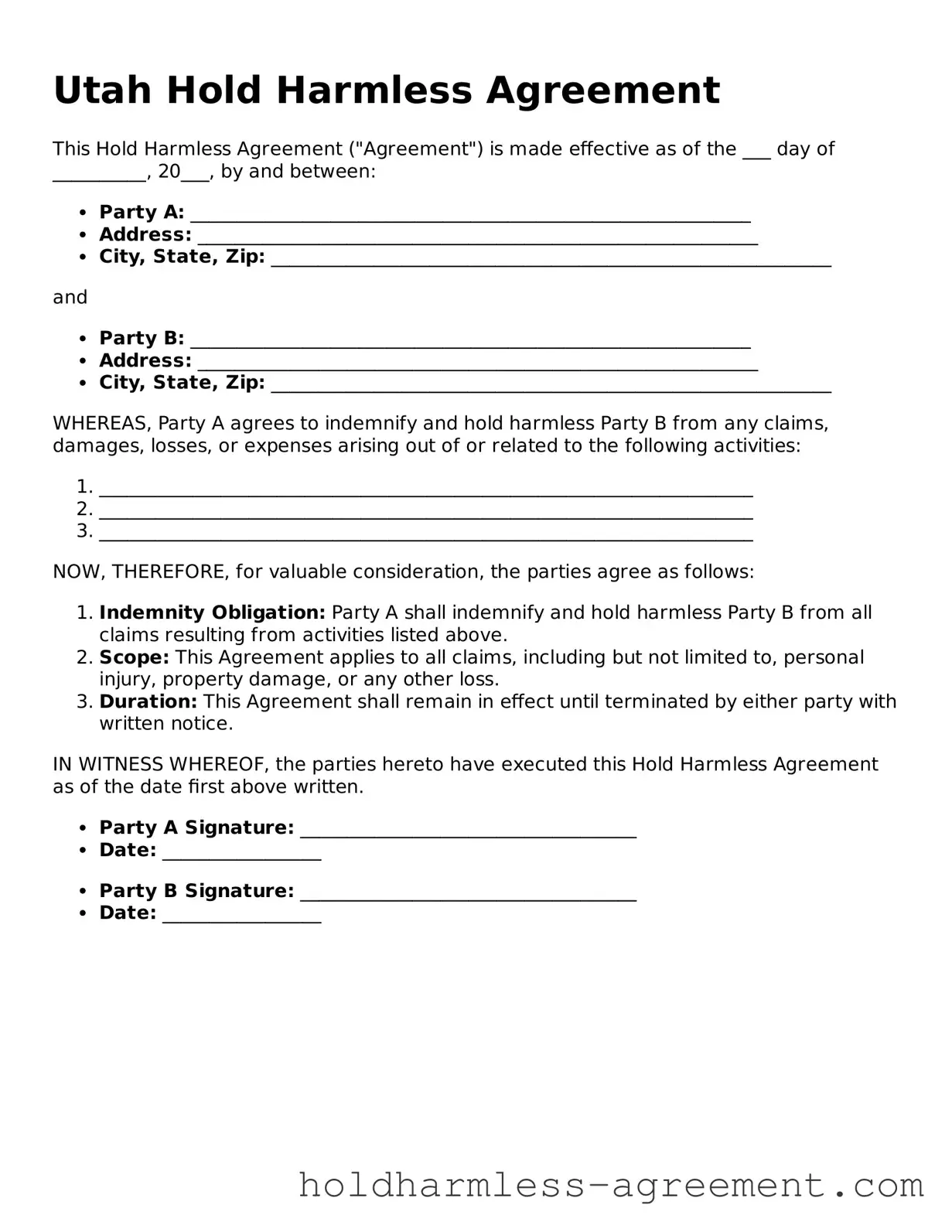What is a Utah Hold Harmless Agreement?
A Utah Hold Harmless Agreement is a legal document designed to protect one party from liability for any injuries or damages that may occur during an event or activity. This agreement typically involves two parties: the indemnitor, who agrees to take on the liability, and the indemnitee, who is protected from claims. The agreement outlines the responsibilities and expectations of both parties to ensure clarity and understanding.
When should I use a Hold Harmless Agreement?
A Hold Harmless Agreement is useful in various situations, including but not limited to:
-
Hosting events or activities where there is a risk of injury.
-
Engaging contractors or vendors for services that could lead to potential damages.
-
Participating in recreational activities that may involve physical risks.
Using this agreement helps to mitigate risks and protect against potential legal claims.
Who should sign the Hold Harmless Agreement?
Both parties involved in the agreement should sign it. The indemnitor, who assumes the risk and liability, and the indemnitee, who seeks protection, must both agree to the terms outlined in the document. It is essential that all parties fully understand their responsibilities before signing.
Can a Hold Harmless Agreement be enforced in Utah?
Yes, a Hold Harmless Agreement can be enforced in Utah as long as it is properly drafted and executed. The agreement should clearly outline the scope of liability being waived and must comply with state laws. However, certain limitations may apply, particularly in cases of gross negligence or willful misconduct.
What should be included in a Hold Harmless Agreement?
A comprehensive Hold Harmless Agreement should include the following elements:
-
The names and contact information of both parties.
-
A clear statement of the activity or event being covered.
-
A description of the risks involved.
-
Specific language detailing the indemnification terms.
-
Signatures of both parties, along with the date of signing.
Including these components helps to ensure that the agreement is clear and legally binding.
Is legal advice necessary before signing a Hold Harmless Agreement?
While it is not legally required to obtain legal advice before signing a Hold Harmless Agreement, it is highly recommended. Consulting with an attorney can provide clarity on the terms and implications of the agreement. This step can help protect your rights and ensure that you fully understand the risks involved.
Utah Hold Harmless Agreement forms can typically be obtained through various sources, including:
-
Online legal document providers.
-
Local legal aid organizations.
-
Attorneys who specialize in contract law.
When obtaining a form, ensure it is tailored to meet the specific needs of your situation and complies with Utah laws.
